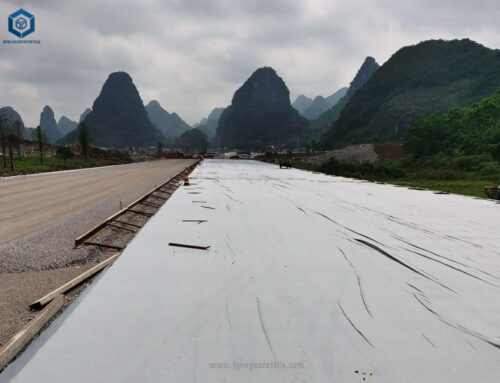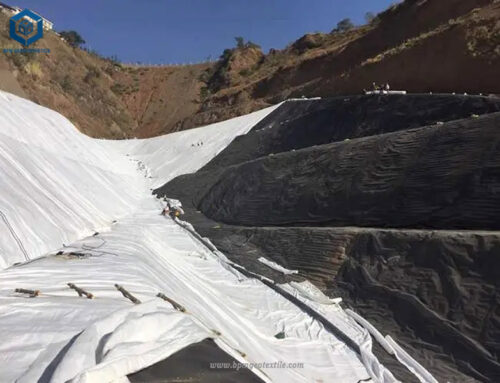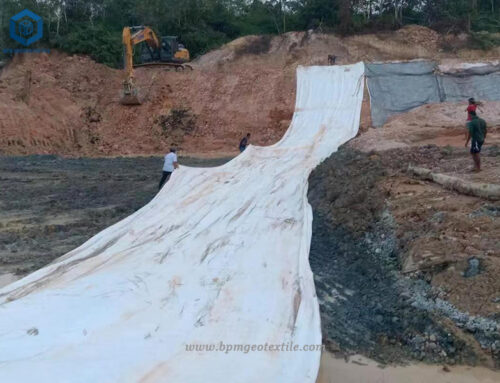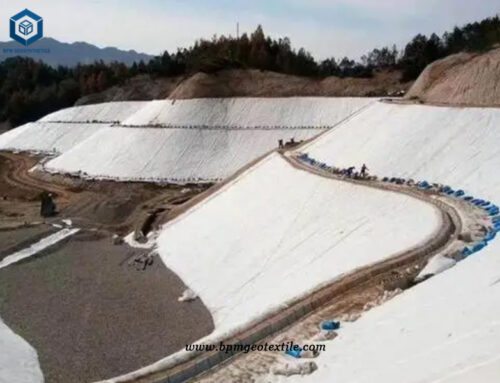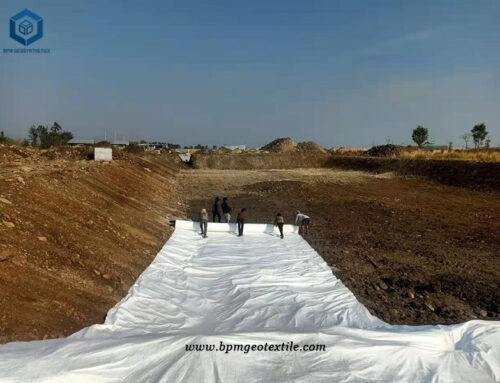Geotextiles and geomembranes are the important geosynthetic materials which can provide sub base reinforcement and anti seepage functions for the fast construction of Wuhan Vulcan Mountain Hospital to fight against the new pneumonia coronavirus disease.
Wuhan Caidian Vulcan Mountain Hospital is based on the model of Beijing Xiaotangshan Hospital during the fight against SARS in 2003, and built a special hospital in Wuhan Workers’ Nursing Home to centrally treat patients with new-type coronavirus pneumonia. The total construction area of the hospital is 33,900 square meters, 1,000 beds are set up, intensive care units, intensive care units, general ward areas are set up, and auxiliary departments such as infection control, inspection, special diagnosis, and radiological diagnosis are set up. There are no outpatient clinics. On January 24, 2020, the relevant design plan of Wuhan Caidian Vulcan Mountain Hospital was completed. As of the evening of January 24, 2020, Wuhan Caidian Vulcan Mountain Hospital had leveled up a total area of 50,000 square meters, which is equivalent to the size of 7 football fields. The earthwork is 150,000 cubic meters, enough to fill 57 swimming pools. A small earth mountain has been leveled overnight, and the gravel backfilling is completed on New Year’s Eve (January 24, 2020). On January 29, 2020, the construction of Wuhan Caidian Vulcan Mountain Hospital has entered the ward installation period.
On the morning of February 2, 2020, Wuhan Vulcan Mountain Hospital was officially delivered. Its main functions are the ward, the consultation room, the ICU, the Ministry of Medical Technology, Network computer room, supply warehouse, garbage storage room, ambulance washing room, etc. The medical forces come from different medical units in the army. Among them, 950 are drawn from the hospitals under the joint logistics support unit, and 450 people who arrived earlier at the Army Medical University, Naval Military Medical University, and Air Force Medical University are included in the unified group. In addition, 15 experts from the PLA Center for Disease Control and Prevention and the Academy of Military Medical Research of the Academy of Military Sciences formed a joint expert group to guide the epidemic prevention and control work in the hospital. It is understood that many of the medical staff have participated in the Xiaotangshan Hospital’s mission to fight SARS and assisted Sierra Leone and Liberia to fight the Ebola epidemic. They have extensive experiences in treating infectious diseases. On February 4, 2020, Wuhan Vulcan Mountain Hospital officially began to receive confirmed patients with pneumonitis infected by a new type of coronavirus, and the first batch of patients was admitted at 9 am on the same day.
Wuhan Vulcan Mountain Hospital is a temporary hospital specializing in the treatment of infectious diseases. The medical and domestic sewage and waste water must be drained by special pipelines. It must be completely closed with the help of geotextiles and geomembranes and cannot penetrate into the ground or into the lake. Polypropylene filament non-woven geotextile, HDPE Geomembrane, polypropylene filament non-woven geotextile, sand cushion layer to form an impervious structure A layer of geomembrane is equivalent to putting on a “protective raincoat” for the underground and surrounding environment of the hospital.
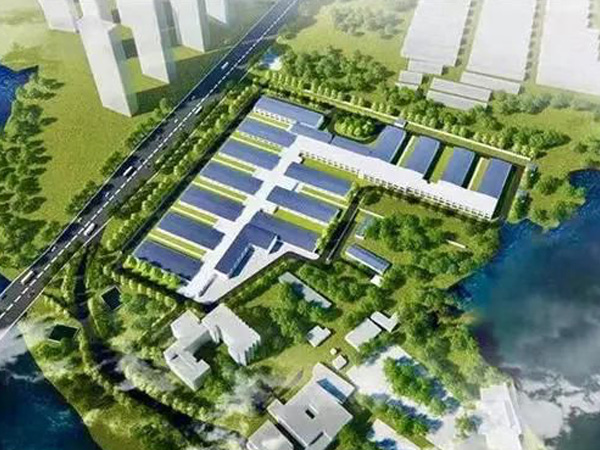
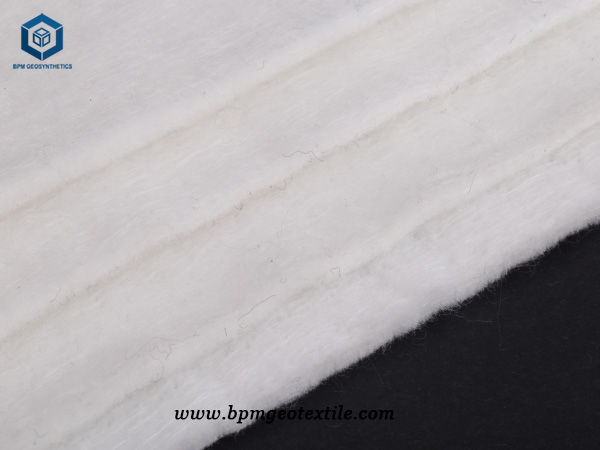
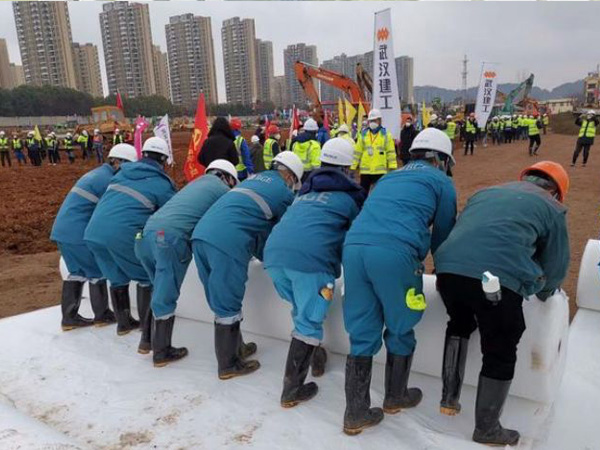
Both geotextiles and geomembranes belong to materials in the large family of geosynthetics. Geosynthetic materials are new types of geotechnical engineering materials. Geotextiles and geomembrane are made of natural or synthetic polymers (plastics, chemical fibers, synthetic rubber, etc.) as raw materials and made into various types of products. They are placed inside the soil, on the surface, or in various layers of soil. Between, it plays the functions and functions of isolation, reverse filtration, drainage, seepage prevention, reinforcement and protection, and solves a series of engineering problems in the stability, deformation and seepage drainage of geotechnical engineering structures. It is widely used in railways and highways. , Water conservancy, electric power, construction, seaport, mining, military industry, environmental protection and other fields of national economic construction. Geosynthetic materials include geogrids, geocells, geotextiles, geomembrane, geowaterproof materials, geodrainage materials, geonets, geosand protection materials, geothermal insulation materials and related geotechnical composite materials, etc., and are known internationally It is the “fourth largest building material” after steel, cement, and wood.
Geomembrane is also known as high-density polyethylene liner, HDPE geomembrane, and HDPE impermeable membrane. It is a relatively water-impermeable film made of high-density polyethylene and other high-molecular polymers. HDPE is a non-polar thermoplastic resin with high crystallinity. The appearance of the original HDPE is milky white, and it is translucent to a certain extent in the thin section. HDPE has good anti-corrosion performance, electrical performance, moisture-proof performance, anti-leakage performance, and high tensile strength, so it is very suitable for engineering seepage prevention, breeding seepage prevention, oil tank seepage prevention, basement seepage prevention, artificial lake seepage prevention and other fields.
Geotextiles and Geomembranes Features and Applications
Geotextiles are water-permeable geosynthetic material made of synthetic fibers by needling or weaving. Geotextile is one of the new materials, geosynthetics. The finished product is cloth-like, with a width of 4-6 meters and a length of 50-100 meters. Geotextiles are divided into woven geotextile and non-woven filament geotextile. Geotextile has the following characteristics: high strength, due to the use of plastic fibers, can maintain sufficient strength and elongation in dry and wet conditions; corrosion resistance, long-term corrosion resistance in soil and water of different PH; water permeability is good There is a gap between them, so it has good water permeability; good anti-microbial properties will not damage the microorganisms and insects meter.
Geotextile applications are as follows:
- Reinforcement in retaining wall backfilling, or used to anchor retaining wall panels. Build a wrapped retaining wall or abutment;
- Reinforce the flexible pavement, repair cracks on the road, and prevent reflection cracks on the road;
- Increase the stability of gravel slopes and reinforced soil to prevent soil erosion and freezing damage at low temperatures;
- Isolation layer between road ballast and roadbed, or isolation layer between roadbed and soft foundation;
- Isolation layer of artificial fill, rockfill or material field and foundation, isolation, anti-filtration and reinforcement between different frozen soil layers;
- The filter layer of the ash storage dam or tailings dam in the initial upstream dam surface, the filter layer of the drainage system in the backfill soil of the retaining wall;
- Filter layer around the drainage pipe or gravel drainage ditch;
- Filters for water wells, decompression wells or inclined pipes in water conservancy projects;
- Geotextile insulation between roads, airports, railway ballast and artificial rockfills and the foundation
- The earth dam is drained vertically or horizontally, and it is buried in the soil to dissipate the water pressure in the void;
- Drainage behind an impervious geomembrane in an earth dam or embankment or under the concrete cladding;
- Eliminate water seepage around the tunnel, reduce external water pressure on the lining and seepage around the buildings
- Drainage of artificial ground filling sports ground;
- Roads (including temporary roads) are used to strengthen weak foundations in railways, embankments, earth-rock dams, airports, and sports fields.
Geomembrane has the following characteristics:
- High impermeability coefficient-impervious film has impervious effects that ordinary waterproof materials cannot match. HDPE impervious film has high strength and tensile resistance. Its excellent elasticity and deformation ability make it very suitable for expansion or contraction. Effectively overcome uneven settlement of the base surface, water vapor permeability coefficient K <= 1.0 * 10-13gcm / ccm2spa;
- Anti-aging performance-the anti-permeability film has anti-aging, anti-ultraviolet, anti-decomposition ability, can be used barely, the service life of the material is 50-70 years, which provides a good material guarantee for environmental anti-seepage;
- High mechanical strength-the barrier film has good mechanical strength, tensile strength at break of 28MPa, and elongation at break of 700%;
- Resistant to plant roots-HDPE impervious membrane has excellent puncture resistance and can resist most plant roots;
- Chemical Stability—Impermeable membranes have excellent chemical stability and are widely used in sewage treatment, chemical reaction tanks, and landfill sites. Resistance to high and low temperature, resistance to asphalt, oil and tar, acid, alkali, salt and other more than 80 strong acid and alkali chemical media corrosion;
- Fast construction speed-impervious membrane has high flexibility, there are many specifications and various laying forms to meet different project impermeability requirements. Adopting hot-melt welding, high welding strength, convenient construction, fast and healthy;
- Low cost and high efficiency—HDPE impervious membrane adopts new technology to improve the impermeability effect, but the production process is more scientific and fast, so the product cost is lower than traditional waterproof materials. According to actual calculation, the general project of HDPE impervious membrane To save costs by about 50%;
- Environmental protection and non-toxicity-The materials used in the anti-seepage membrane are all non-toxic and environmentally-friendly materials. The principle of anti-seepage is ordinary physical changes without producing any harmful substances. It is a better choice for environmental protection, breeding and drinking water ponds.
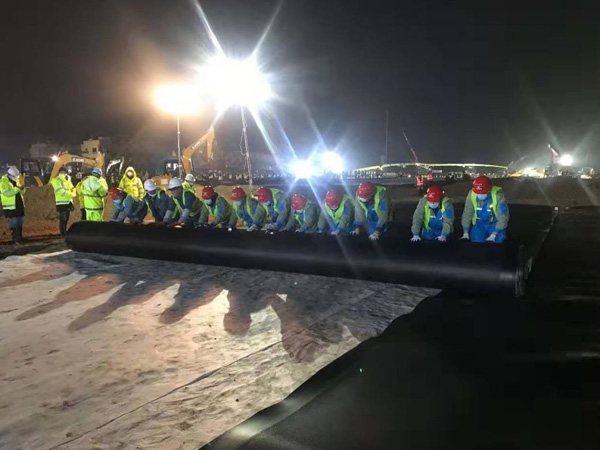
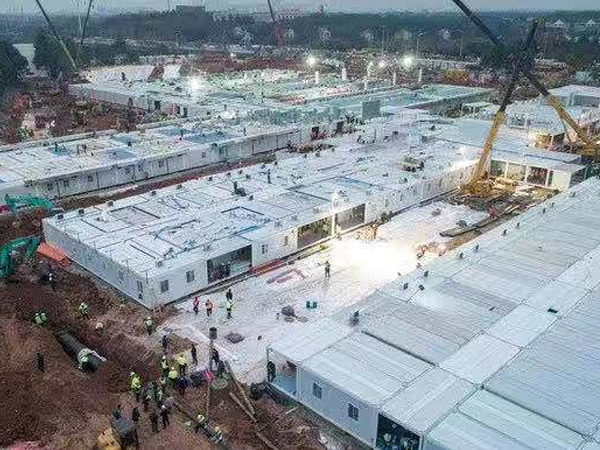
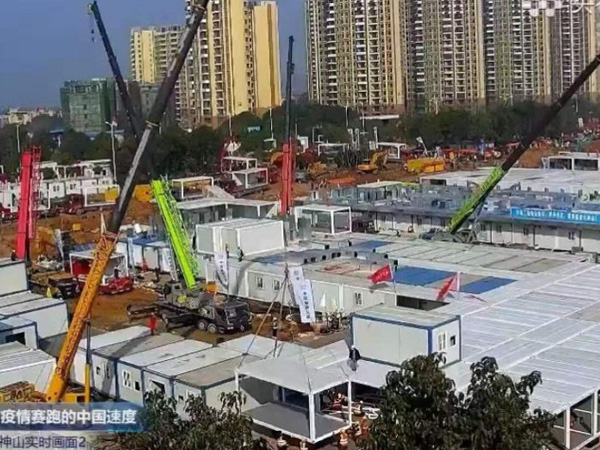
Geotextiles and geomembranes are the important geosynthetic materials which can provide sub-base reinforcement and anti seepage functions engineering. The two sides of the geomembrane are heated by the far infrared of the oven, and the geotextile and the geomembrane are pressed together by the casting method or by the guide roller Formed geotechnical waterproof material. Two geotextiles and one geomembrane have the advantages of small specific gravity, good elongation performance, strong adaptability to deformation, acid and alkali resistance, corrosion resistance, aging resistance, low temperature resistance, and good frost resistance. Geotextiles and geomembranes are widely used in environmental protection projects such as domestic waste filling Buried sites, sewage treatment plants, toxic and hazardous substance treatment sites, dangerous goods warehouses, factories; water conservancy and civil engineering, rivers, lakes, reservoirs, dams, seepage prevention, plugging, reinforcement, seepage prevention of canals, vertical core walls, slope protection, etc. ; Municipal engineering, subway, underground engineering of buildings, roof cisterns, roof garden seepage prevention, sewage pipe lining, etc .; landscaping: artificial lakes, ponds, pond linings for golf courses, slope protection, etc .; petrochemical: chemical industry Anti-seepage and anti-fouling in oil storage tanks of oil refineries and refineries, chemical reaction tanks, lining of secondary sedimentation tanks, secondary linings; mining: washing tanks, heap leaching tanks, ash yards, tailings dams, etc. Transportation facilities engineering: railway, highway, airport foundation reinforcement, tunnel or culvert imperviousness; agriculture: reservoirs, drinking water ponds, impoundments, irrigation systems, etc .; and aquaculture, such as fish ponds, shrimp Lining of the pool And other fields.
The construction of Vulcan Mountain Hospital is the laying of geotextiles and geomembrane, and geotextiles in sequence on the site. Among them, the geotextile is a 600 g/m2 non woven polypropylene filament geotextile, and the geomembrane is a 2.0 mm thick HDPE geomembrane liner. The connection between the two geotextiles adopts the overlap method, and the connection between the geomembrane uses the welding method.
If the geomembrane is laid directly in the soil layer, sharp particles in the soil may penetrate the geomembrane. Therefore, when laying a geomembrane, it is necessary to lay a geotextile and a sand cushion on the top and bottom of the membrane, respectively, to block sharp particles in the soil and protect the geomembrane.
Wish the people of the world win the fight against the new coronavirus pneumonia! Pay tribute to the health care workers, builders and all selfless dedication in the fight against the new coronavirus pneumonia!
About BPM
BPM has been manufacturing and supplying many types of effective and states of the art geotextile, geomembranes, and other geosynthetics to over 36 countries. Our geosynthetic products are widely used across a variety of industries including waste containment, water containment, aquaculture, industrial project, energy project and mining projects, etc. Our main customers are from Australia, France, Sweden, UK, Hungary, New Zealand, Poland, Mexico, Ecuador, Brazil, Pakistan, Bangladesh, Thailand, Vietnam, Malaysia, Indonesia, Singapore, Philippines, Sri Lanka, India, UAE, Saudi Arabia, Qatar, Kenya, etc.

